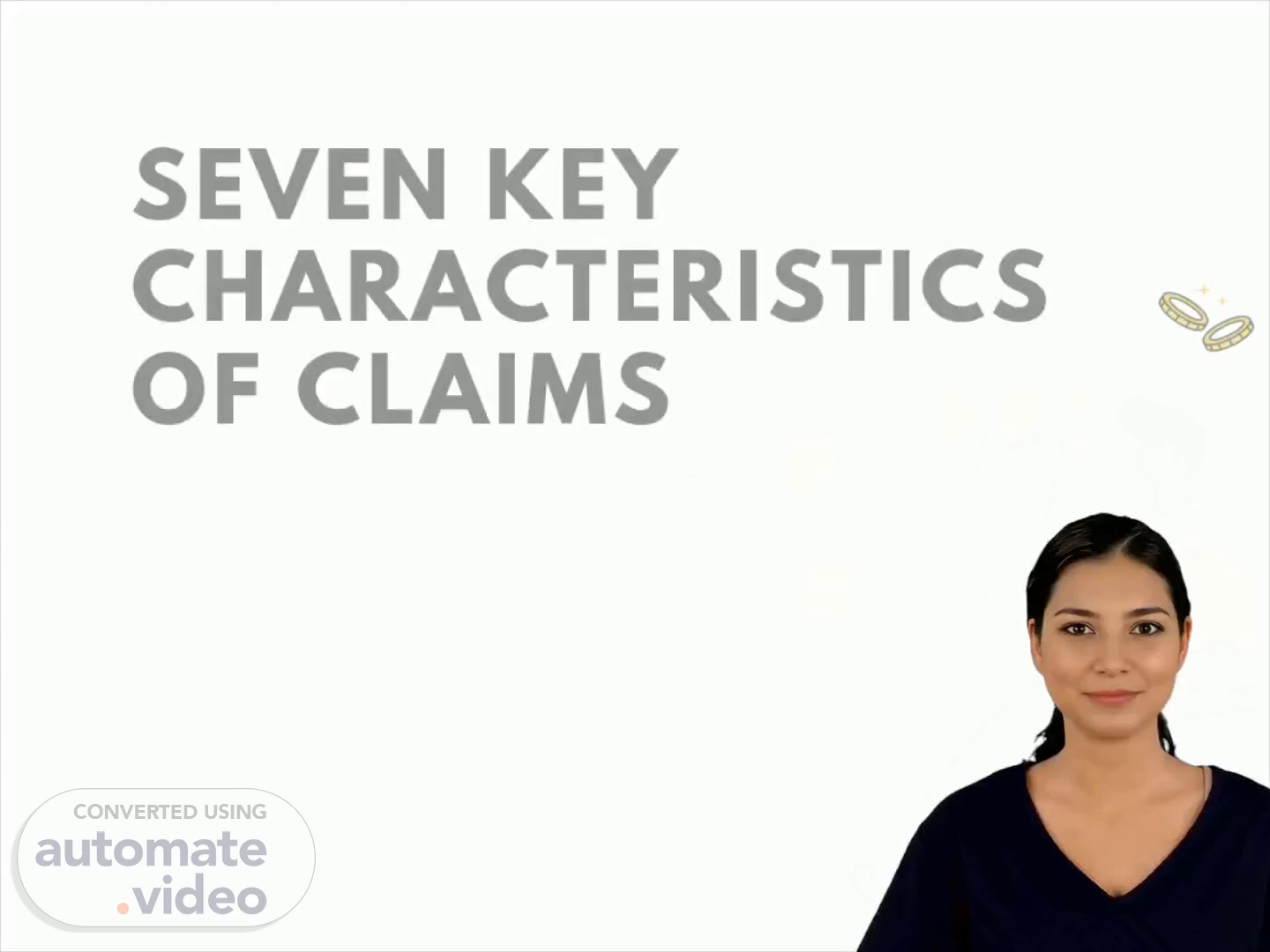
7 key characteristics of claims
Scene 1 (0s)
[Virtual Presenter] Good morning everyone. Today I will be discussing the seven key characteristics of claims presented by Gerald Fernando. We will explore how to make sure claims are clear, specific, equal, go against the status quo, and set clear burdens for both sides. Let's get started..
Scene 2 (23s)
[Audio] Claims are crucial to a discussion, as they are declarative statements that form the basis for an argument and supply necessary information and evidence. Forming a claim as a question can be too open-ended and create confusion, so they should be crafted as a result of a conversation and from a particular perspective..
Scene 3 (43s)
[Audio] When making a claim, it is essential to make sure that it is concise and impartial. Utilizing the correct words is necessary to attain the desired outcome. Additionally, it is important to structure the claim in a manner in which both parties have an equal chance to state their opinion, maintain, and back up their viewpoint. This will promote an atmosphere of understanding and consent..
Scene 4 (1m 9s)
[Audio] Claims should identify the subject (who), action (what), and when (if applicable) as precisely as possible, without requiring explanation of why the statement is being made (which is typically explained in the accompanying argument)..
Scene 5 (1m 25s)
[Audio] When making a claim, it is essential to look into its correlation with the current state of affairs. A claim that contradicts with the status quo may result in much dispute. Establishing the status quo beforehand is indispensable for a claim to be properly evaluated – if not, a proponent can structure the claim in the way that benefits them, thus formulating the basis of the discussion..
Scene 6 (1m 51s)
[Audio] The fifth key characteristic of a successful claim is to ensure that the burdens of proof are clear to both sides involved in the debate. The burden of proof is usually put on the party making the claim, which should be followed by an argument in support of the claim. This argument should show that the existing situation is inadequate and requires a change to accommodate the proposed claim..
Scene 7 (2m 17s)
[Audio] Considering claims requires accounting for the con side of the argument. This involves considering the burden of presumption, which implies that the status quo should remain desirable. Outlining arguments to support why the status quo is satisfactory and can remain the same is how the con side is expressed. Critically examining both sides of a claim is essential in evaluating an argument..
Scene 8 (2m 43s)
[Audio] The second key characteristic of making a successful claim is the burden to make a prima facie case, which involves presenting a reasonable stand for your position and demonstrating it with logical arguments, emotional appeals, and ethical considerations. The third key characteristic is the burden of rebuttal, requiring both parties to respond to each other's arguments since, in Western Argumentation, silence is interpreted to mean consent. Both of these burdens are shared by both Pro and Con sides..
Scene 9 (3m 17s)
[Audio] When making a compelling argument, it is important to focus on only one claim. Trying to make multiple claims at the same time can cause disorganization and difficulty in reaching a decision. To ensure clarity and efficiency, let one side argue for the acceptance of the claim while the other argues against it. This way, each side can present their evidence before a decision is made..
Scene 10 (3m 45s)
[Audio] Claims are effective when they foster a pro/con argumentative situation. This means that they can be used to back either accepting or denying an opinion. For example, a good claim can be applied to either endorsing a new regulation or rejecting it. Either way, it should help strengthen the debate instead of removing value from it. It is important to remember that, depending on the situation, claims can be useful for both acceptance and for denial..
Scene 11 (4m 18s)
[Audio] I hope you found this information useful and have taken away some valuable insights into how to effectively manage claims. We discussed the steps in the claims process and how to use them to your advantage, as well as the different types of remedies available and what types of damages you can seek. We explored the seven key characteristics of claims, which have a structure and process that can help anyone effectively resolve disputes. Thank you for your time and attention..